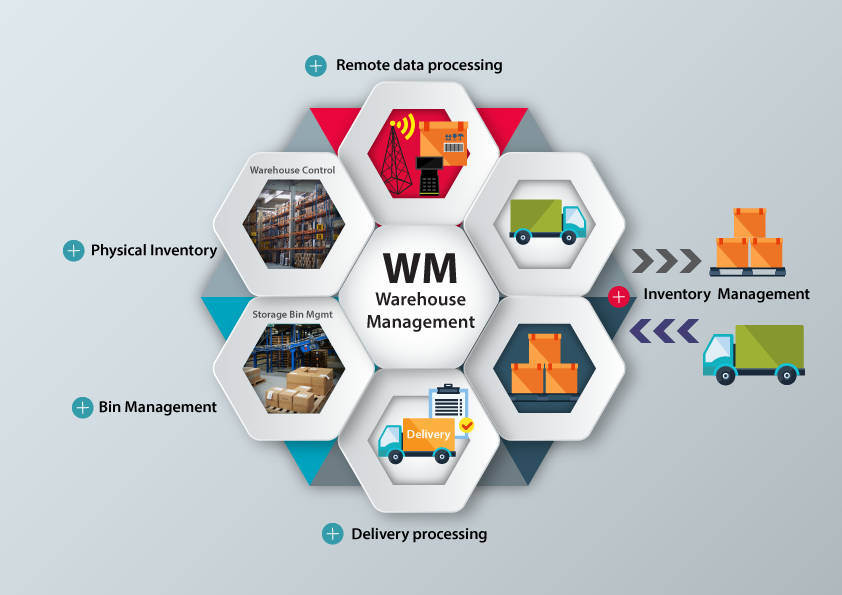JavaScript Web Frameworks Software is an important aspect of modern front-end web development because it gives developers tried-and-true tools for creating scalable, dynamic online applications. Many modern firms employ frameworks as a fundamental component of their toolkit; therefore, framework familiarity is now required for many front-end development positions.
The majority of JavaScript Web Frameworks Software is open source and free, allowing users to compare and contrast their features. The widespread usage of JavaScript necessitates the development of JavaScript framework software. These frameworks provide a skeleton or template for web developers, providing pre-written code for common tasks. These frameworks allow users to quickly develop big web applications, reuse a large number of feature sets, and avoid creating code from scratch.
JavaScript is a multi-paradigm programming language that supports event-driven, procedural, and high-level programming styles. Originally, JavaScript was solely utilized on the client side. However, JavaScript is now also used as a server-side programming language.
Table of Contents
Why Do We Use JavaScript Web Frameworks Software?

The JavaScript framework is an object-oriented language that enables programmers to modify the generic functions of their software. Frameworks are more flexible for the creation of websites, and therefore, most website developers prioritize them.
JavaScript frameworks are a kind of tool that makes operating with JavaScript adaptable and easier. These frameworks also make it convenient for the developers to design the software as a device responsive.
JavaScript frameworks are quite popular because of their responsiveness feature when it comes to the question of operating a high-level machine language. The best JS Frameworks in 2022 are mentioned below.
Key features and functions of JavaScript Web Frameworks Software
JavaScript Web Frameworks Software is an application framework written in JavaScript where programmers can manipulate the functions and use them for their convenience. Following are the key features offered by the popular JavaScript web frameworks software.
- Scripting Language with a Small Footprint
Because it is designed just for data handling in the browser, JavaScript is a small-footprint programming language. It has a restricted number of libraries because it is not a general-purpose language. The lightweight nature of JavaScript is also a fantastic attribute because it is exclusively designed for client-side execution and that too for web apps.
- Dynamic typing
JavaScript allows for dynamic typing, which implies that the type of a variable is determined by the stored value. If a variable is declared x, for example, then it can be stored as a text, a Number type value, an array, or an object. Dynamic typing is the term for this.
- Object-Oriented Programming Support
This feature is used rarely by JavaScript developers, still, it can be explored by everyone because of its availability. Object Creation Patterns (Encapsulation) and Code Reuse Patterns are two fundamental OOP ideas in JavaScript (Inheritance).
- Functional Style
JavaScript web framework software uses a functional approach. Even the objects that are created from the constructor functions, each represent a unique object type.
- Platform Independent
This means that JavaScript is portable, which that signifies, the script may be written once and run everywhere, at any time. JavaScript programs can be run on any browser without affecting the script’s output.
- Prototype-based Language
JavaScript is a scripting language that is built on prototypes. This indicates that prototypes are used instead of classes or inheritance in JavaScript. However, with JavaScript, an object prototype is specified, which can subsequently be used to generate new objects.
- Client-side Validations
This is a feature that has been present in JavaScript for a long time and is still frequently used since every website includes a form where users enter values, and in order to ensure that users submit the correct value, adequate validations must be implemented on both the client and server sides. Client-side validations are implemented using JavaScript.
In addition to the above-mentioned features, other functionalities of JavaScript framework software include:
- More control in the browser
- User friendly
- Organized and obligatory
- Robust and delegation software
Top 10 JavaScript Web Frameworks Software
Angular
Angular is one of the most efficient, strongest, and open-source JavaScript frameworks. This framework is operated by Google and is executed for designing a Single Page Application (SPA). It expands the HTML into the application and explicates the attributes to execute data binding. The key features of Angular can be categorized into:
Cross-Platform
- Progressive Web Apps
Angular has modern web platform abilities to offer app-like experiences that are offline, great performance, and zero-step installation.
- Native
It takes its strategies from NativeScript, Ionic, and Cordova to design the native app.
- Desktop
Desktop-installed apps across Linux, Windows, and Mac can be designed using the same Angular techniques such as the web plus the capacity to access native OS APIs.
Speed and Performance
- Code Generation
Angular converts templates into code that’s highly used for JavaScript virtual machines, offering hand-written code opportunities.
- Universal
Provide the first view of .NET, PHP, Node.js, and other users for near-instant offerings in just CSS and HTML.
- Code Splitting
Angular apps operate quickly with the new Component Router. It delivers automatic code-splitting. Hence, users load the necessary code to offer the view demanded by them.
React
Designed by Facebook, the React framework has gained popularity within a short span of time. It is used to create and optimize the zestful User Interface of the web pages with high incoming traffic. It utilizes a virtual DOM, and therefore, the implementation of the same with any application is more effortless. The key features of React include:
- Declarative
Designs lively and interactive user interface for mobile applications and websites. Answer updates efficiently and offer the appropriate elements when data changes. Declarative views make the code simple to debug and also readable.
- Virtual DOM
For each DOM object, there exists a corresponding “virtual DOM object.” It builds a virtual copy of the original DOM that serves as a representation of a DOM object.
- JSX
JSX is a markup syntax. It nearly resembles HTML. JSX makes designing React components simpler by converting the syntax nearly similar to the HTML introduced into the web page.
- Data binding
React offers one-way data binding using Flux controls as an application framework. Flux is a design provided that makes data unidirectional, and one-way data flow makes it easier to reason about an application.
Vue.js
Vue.js was designed in the year 2016. This JavaScript framework has already left its imprint on the market and has proven its worth by providing several features. Its dual integration mode emerges as one of the most appealing functionalities for designing high-end SPA or Single-page applications. Vue.js is quite a dependable platform for designing cross-platform. The key features of Vue.js include:
- Virtual DOM
Every update designed for the DOM is absorbed by the virtual DOM and presented in the form of JavaScript data structures, which are compared to the original data structure. The viewers can see the final changes that are reflected in the DOM. The process is innovative and cost-effective, and the modifications are completed rapidly.
- Data Binding
This feature makes it easier to handle HTML attributes and applies values to them, alter the style, and assign classes using the v-bind binding directive.
- CSS Transitions and Animations
When HTML elements are added, changed, or removed from the DOM, this feature provides numerous methods to perform a transition. A built-in component covers the element responsible for returning the transition effect, among other things.
- Template
It offers HTML-based templates for binding the DOM to Vue.js instance data. Virtual DOM Render functions are created from the templates. The render functions template can be used by a developer, and the render function can be used in place of the template.
- Complexity
In terms of API and design, Vue.js is more straightforward. In a single day, a web developer can create simple applications.
Ember.js
Ember.js was introduced to the software market in 2015, and since then, it has earned popularity with its diverse application area. The functions of Ember.js assist two-way data binding and therefore, build a flexible platform for managing complicated user interfaces. Well-known websites such as Netflix, Nordstrom, LinkedIn, and many others opt for the Ember.JS software for their websites.
The key features of Ember.js include:
- MVVM
Ember.js works on the MVVM (Model-view-view) model pattern and follows the Convention over Configuration (CoC).
- Ember-CLI
Ember-CLI provides a standard application structure and builds pipelines. It is a command-line utility tool that comes along with the framework’s software of Ember stack.
- Ember Templates
Templates are available in-built into the UI of Ember.js, which are written with Handlebar’s templating language. CSS and HTML form the core of the Ember development model. Client-side rendering and URL support are available and it also minimizes the DOM.
- Troubleshooting
The Ember Inspector tool may be used to troubleshoot apps.
Meteor
Meteor’s application area, also known as Meteor.js or Meteor, justifies the name itself since it is distinct as it covers almost all the major sections of software development. Operations of this framework include major areas such as business logic, rendering of the front-end, back-end development, and management of the database.
Features of Meteor as a full-stack Solution include:
- Meteor proves to be a full-stack solution for designing and positioning web applications.
- The framework provides various built-in features, such as JS minification on the production server, reactive templates, and automatic CSS.
- Its cloud software, Galaxy, has the potential for scaling, deploying, and observing client applications.
- It is also filled with useful client-side advancements, including events, helpers, and templates.
Mithril
Mithril is a client-side JavaScript framework. It is mainly used in designing single-page applications. The framework’s implementation is simpler because there are no functions to be derived from a base class. It is minute (< 8kb gzip), fast and offers XHR utilities and routing out of the box. Few of its features are identical to React.
Features of Mithril as a full-Stack Solution include:
- Mithril emerges as a full-stack solution for designing and deploying web applications.
- The framework provides different built-in functions, such as automatic CSS, reactive templates, and JS minification on the production server.
- Galaxy, its cloud platform, is powerful for deploying, scaling, and monitoring client applications.
- It is also bundled with useful client-side technologies, including templates, helpers, and events.
Node.js
Node.js is a server-side JavaScript run-time environment. It operates on multiple software and is open-source. The framework has the capacity to accelerate asynchronous I/O with its event-based architecture. It operates in the JavaScript Runtime environment and reflects Java’s identical properties such as packaging, forming loops, and threading.
Features of Node.js as a full-stack Solution include:
- Swift operation
Because Node.js is based on Google Chrome’s V8 JavaScript engine, it is extremely quick when it comes to code execution.
- Asynchronous and Event-Driven I/O
All APIs are asynchronous, which means the server does not have to wait for the API to return data. Here, the server requests each API one by one and then moves on to the next one, utilizing an Events notification system to create a response from the previous API. This also makes it quick.
- Single-threaded
Node.js uses a single-threaded paradigm, as does event looping.
- Highly scalable
Node.js uses an event framework that allows the server to reply in a non-blocking way, making it scalable.
- No buffering
When uploading audio and video files, Node.js dramatically reduces the processing time. It does not buffer any data, and the data is delivered in chunks here.
- Open source
Because Node.js is open source, the community has created a number of excellent models that may be utilized to improve the capabilities of Node.js apps.
- License
It is available under the MIT license.
Polymer
The polymer is an open-source JavaScript library. Google has designed this JavaScript web framework software that can build the website’s elements without diving into a complicated level. Also, it assists both one-way and two-way data binding, therefore turning it into an extensive application area.
Key features of Polymer include:
- It offers polyfills for designing reusable and customized elements.
- It helps in the creation of reusable widgets in web applications and documents.
- It uses Google material design to create mobile applications for the simple and fast creation of mobile applications.
Aurelia
Aurelia framework is the brand-new version of JavaScript, which can be used to execute any interface. It is the next generation of the framework for designing top-level vigorous websites. The framework of Aurelia can expand the HTML for several reasons, including data binding. Additionally, its modern architecture makes sure that the aim of toll is to explain server-side and client-side at a time.
Key features of Aurelia include:
- Components
Components are building blocks of the Aurelia framework and are made up of HTML views and JavaScript view-model pairs.
- Web Standards
It is one of the simplest modern frameworks. It totally stresses web standards without unwanted abstractions.
- Extensible
The framework supports a convenient way to combine with the other required tools.
- Commercial Support
This framework provides enterprise and commercial assistance.
- License
Aurelia is licensed and open-sourced under MIT license.
Backbone.js
Backbone.js is one of the most renowned JavaScript frameworks. It is seamless to memorize and understand. It can be utilized to build single-page applications. The creation of this framework involves the concept that all the server-side features must operate through an API, which would assist in achieving complicated functionalities by entering less code.
Key features of Backbone.js include:
- JavaScript features are used by BackboneJS, making the creation of applications and the front end much simpler.
- Building blocks such as events, views, models, routers, and collections are offered for collecting client-side web applications.
- It is a flexible library that assists in differentiating user interface logic and business.
- It is a free and open-source library. It consists of over 100 available extensions.
- It is the backbone of any application. It assists in the organization of the code.
- BackboneJS has an easy dependency on jQuery and a tough dependency on Underscore.js.
- It enables users to build mobile applications or client-side web applications in an organized and well-structured format.
Conclusion
When it comes to web development, JavaScript continues to be the dominant language, and thus, we’ve several JavaScript frameworks to select from.
We hope our suggested list of frameworks for JavaScript helps you decide the best one for your program. Thus, precisely analyze your program demands before opting for your framework for your operation as every framework comes with some features that you may bear during expansion.
Apart from the features, also count the knowledge wind, complicacy, compatibility documentation, and community support. For more information on JavaScript framework software, kindly connect with us at SaaSworthy.
Also read
10 Proven SaaS Growth Hacks to Boost Your Business
Top 5 Remote Monitoring And Management Software For IT Teams






